Do Prefab Homes Come with Appliances? Let’s take a look.
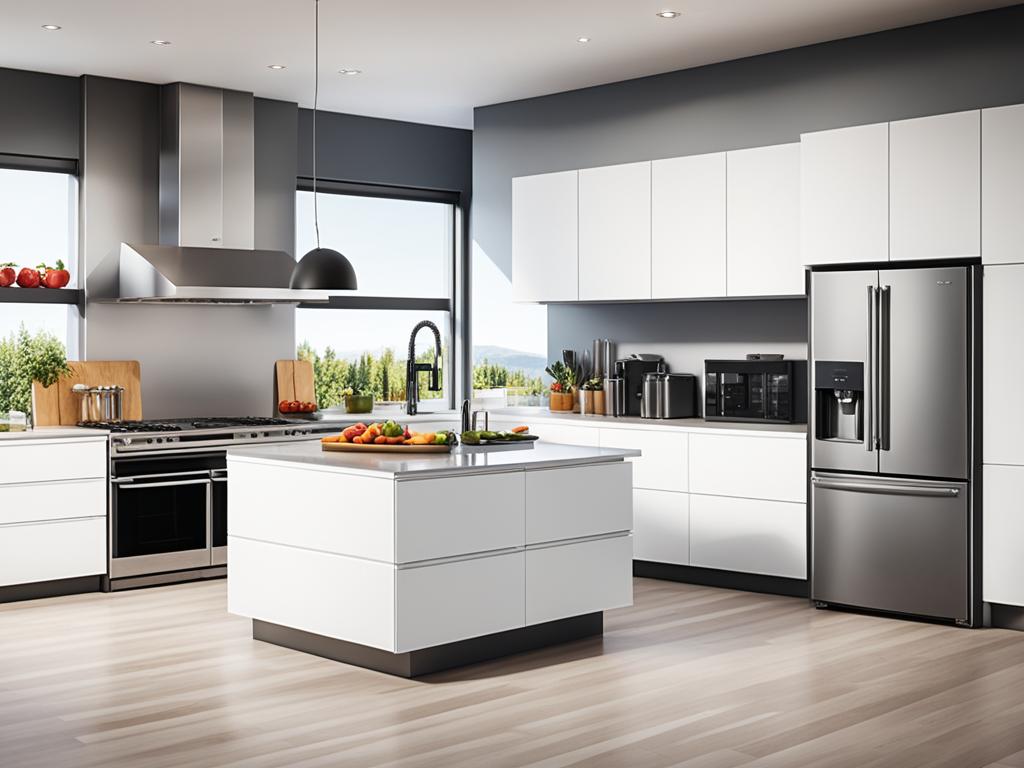
Prefabricated homes, also known as prefab homes, are becoming increasingly popular due to their affordability and efficiency. Many people wonder if these homes come with appliances included in the package. In this article, we will explore the different types of prefab homes, their benefits, and whether or not they typically include appliances.
Key Takeaways
- Prefab homes offer an affordable and efficient housing solution.
- The cost of prefab homes can vary depending on factors such as size, design, and customization options.
- Some prefab homes may come with pre-installed appliances, including kitchen appliances, but it’s essential to confirm with the manufacturer or builder.
- Prefab homes provide benefits such as energy efficiency, sustainability, and customization options.
- When considering a prefab home, it’s crucial to research and understand the specific features and inclusions of the chosen package.
Types of Prefab Houses
If you’re considering a prefab home, you’ll be delighted to know that there are various types available to suit different preferences and needs. Each type offers unique features and design options, allowing you to find the perfect match for your dream home.
1. Modular Homes: Modular homes are constructed in sections or modules off-site and then transported to the desired location for assembly. These homes offer a wide range of design options, allowing you to customise the layout and appearance to your liking. They are known for their structural integrity and can be easily expanded or relocated if needed.
2. Panelized Homes: Panelized homes are built using pre-made wall panels and roof trusses. These panels are manufactured off-site and then transported to the building site for assembly. The construction process is quicker compared to traditional stick-built homes, and the design options are extensive.
3. Cabin Prefab Homes: Cabin prefab homes are ideal for those seeking a rustic and cosy retreat. These homes often feature timber or log construction, providing a warm and inviting atmosphere. Cabin prefab homes can range in size from small weekend getaways to spacious family retreats.
4. Tiny Prefab Homes: Tiny prefab homes, also known as tiny houses or micro homes, have gained popularity for their minimalist and efficient design. These homes maximize space and prioritize functionality, making them suitable for individuals or couples looking to downsize or embrace a simpler lifestyle.
By exploring different types of prefab houses, you can find the perfect design that aligns with your vision and lifestyle. Whether you prefer the versatility of modular homes, the convenience of panelized homes, the charm of cabin prefab homes, or the efficiency of tiny prefab homes, there’s an option to suit every taste and budget.
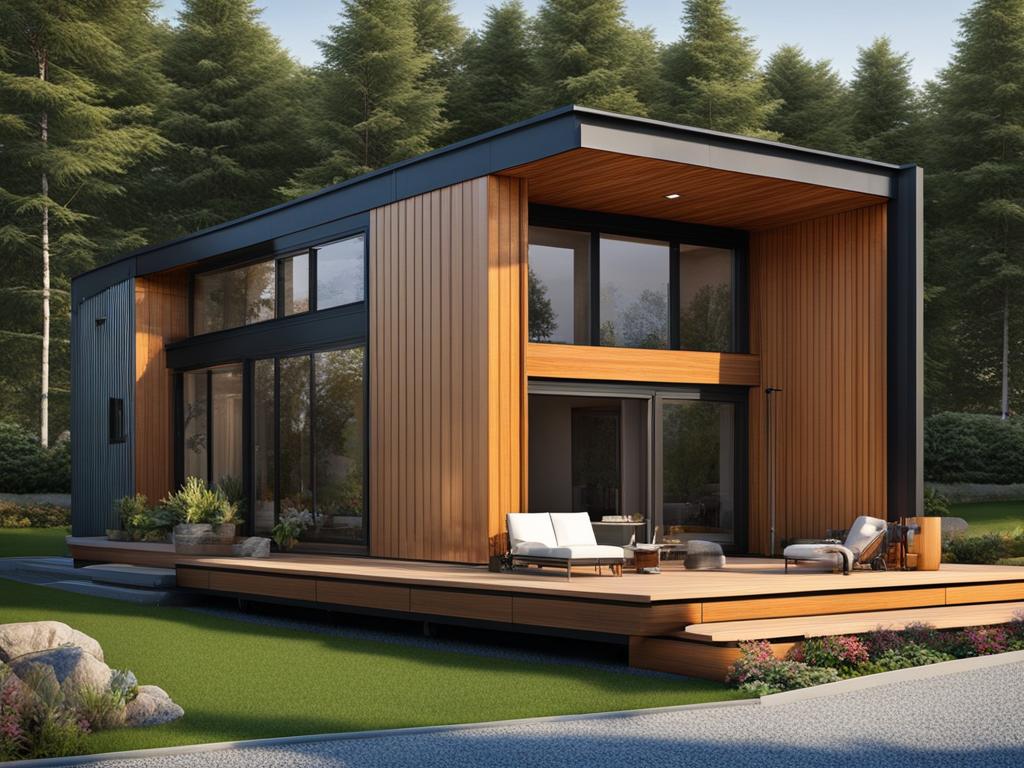
How Much Do Prefab Homes Cost?
The cost of prefab homes can vary depending on factors such as size, design, customization options, and location. According to Home Advisor, a simple prefab home can cost around £100,000, while a custom-made prefab home can range from £200,000 to £300,000. These costs typically do not include the value of the site itself. Additional costs to consider include building and transportation expenses, such as delivery, installation, permits, and utility construction.
When it comes to prefab home pricing, it’s essential to have a clear understanding of the overall cost breakdown. This breakdown includes the base price of the home, customization costs, installation expenses, and any additional features or upgrades you choose to include.
Cost Breakdown of Prefab Homes
When assessing the cost of prefab homes, it’s crucial to consider the following factors:
- Base Price: This is the starting cost of the prefab home, which can vary based on factors such as size, design, and material quality.
- Customization Options: Customizing your prefab home can include choosing specific finishes, fixtures, flooring, and other upgrades. These additions can increase the overall cost.
- Installation Costs: The process of delivering and installing a prefab home comes with additional expenses. This includes transportation fees, crane or forklift rental, and the cost of preparing the foundation at the site.
- Permits and Utility Construction: Depending on the location and regulations, obtaining permits for your prefab home may incur fees. Additionally, connecting utilities such as water, electricity, and sewerage can add to the overall cost.
It’s worth noting that prefab home delivery costs can also vary based on the distance from the manufacturer to the installation site. The further the distance, the higher the transportation expenses may be.
By considering all these factors, you can gain a better understanding of the overall cost of prefab homes and ensure that your budget aligns with your desired design and customization options.
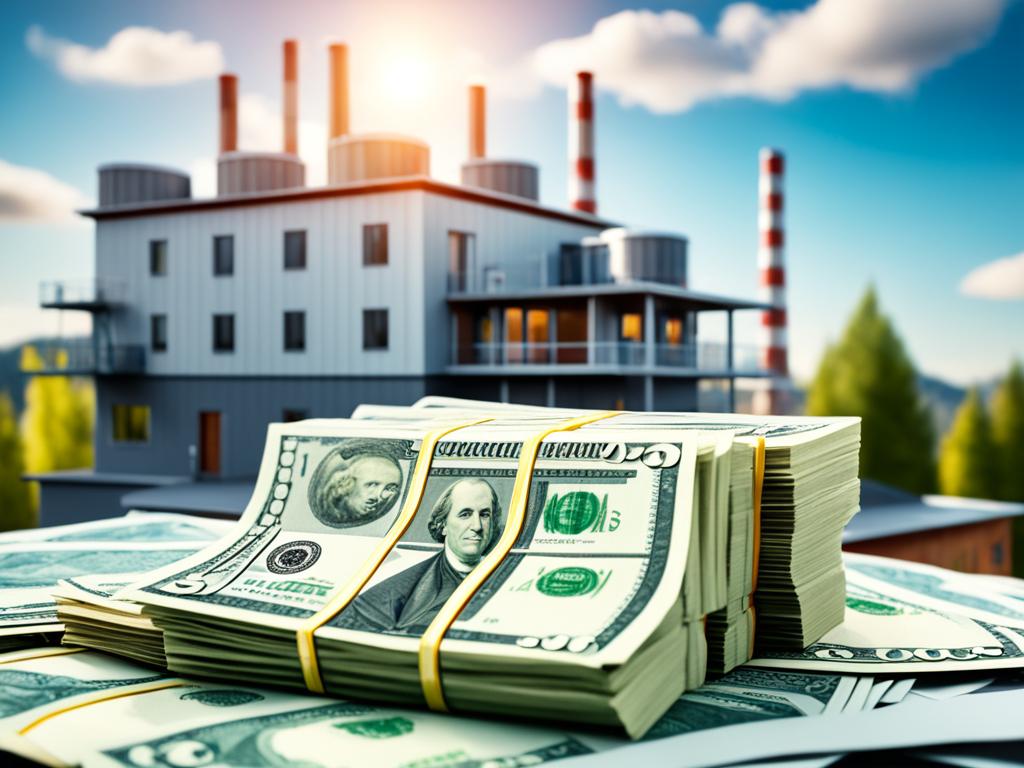
The Advantages of Prefab Homes
Prefab homes, also known as modular or factory-built homes, offer numerous advantages that make them an appealing choice for prospective homeowners. Whether you’re looking for a sustainable and energy-efficient living solution or a customizable home design, prefab homes have a lot to offer. Let’s explore the key benefits of prefab homes:
1. Energy Efficiency
Energy efficiency is a significant advantage of prefab homes. These homes are constructed with energy-efficient materials and advanced insulation techniques, which help to minimize energy wastage. From efficient heating and cooling systems to high-performance windows, prefab homes are designed to maximize energy savings and reduce utility costs.
2. Sustainability
Prefab homes are known for their sustainability. The construction process generates less waste compared to traditional site-built homes, making it an eco-friendly choice. Additionally, many prefab home manufacturers prioritize environmentally friendly materials and integrate sustainable features such as solar panels, rainwater harvesting systems, and low-flow plumbing fixtures, further reducing your carbon footprint.
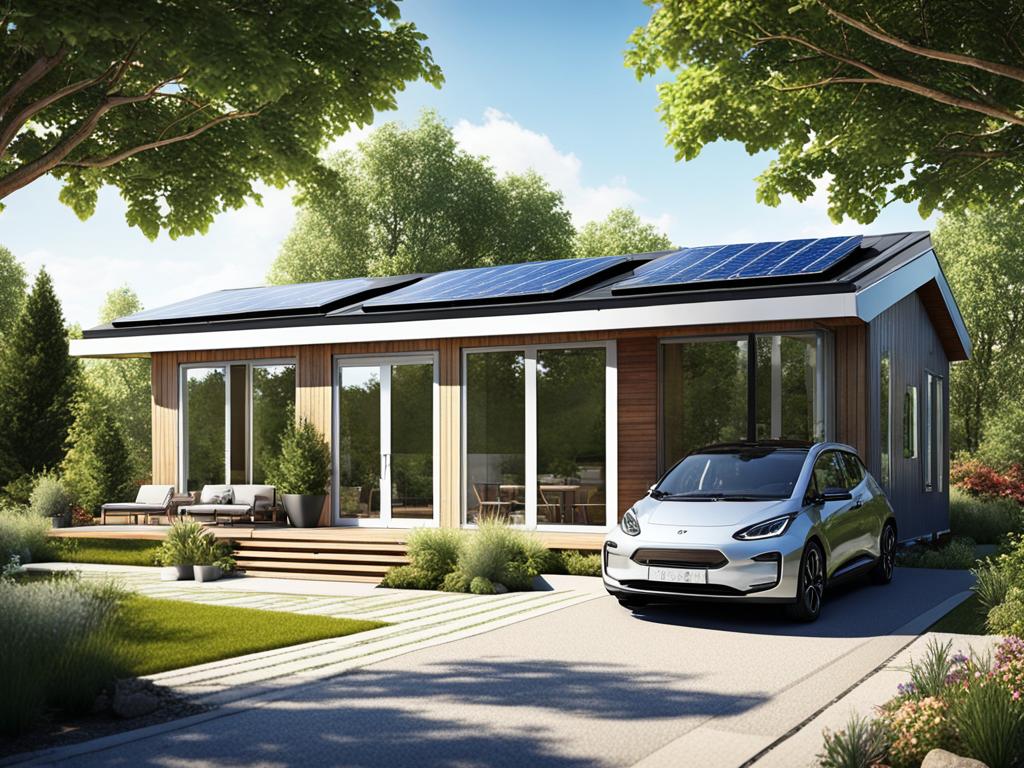
3. Speedy Construction
One of the key advantages of prefab homes is the speed of construction. Since most of the components are fabricated off-site in a controlled factory environment, the construction process can be completed in a fraction of the time required to build a traditional home. This rapid construction not only saves time but also reduces labor costs, making prefab homes an efficient and cost-effective choice.
4. Customization Options
Prefab homes offer a wide range of customization options, allowing you to create a home that suits your unique preferences and needs. From selecting the layout and finishes to choosing the floor plan and architectural style, you have the flexibility to personalize your prefab home to reflect your individual style and taste.
5. Affordability
Prefab homes are often more affordable than traditional site-built homes. The efficient construction process and bulk purchasing of materials help to reduce costs, making prefab homes a budget-friendly option for many homeowners. Additionally, the speed of construction means you can save on expenses associated with extended construction periods, such as temporary accommodation or renting costs.
With their energy-efficient and sustainable features, speedy construction, customization options, and affordability, prefab homes offer a compelling housing solution for those looking for a modern and efficient living space.
Prefab Homes and Included Appliances
When considering prefab homes, one question that often arises is whether these homes come with appliances included in the package. The answer to this question can vary depending on the manufacturer and the specific package chosen.
Some prefab homes, especially modular homes, may come with pre-installed appliances, including kitchen appliances. This can be a convenient option for homeowners looking for a turnkey solution. Having the appliances already installed saves time and effort, allowing you to move into your new home without the hassle of purchasing and installing appliances separately.
However, it is crucial to check with the manufacturer or builder to confirm what is included in the package. While some prefab homes may include a standard set of appliances, others may offer appliance packages as optional upgrades. These appliance packages can provide additional customization options, allowing you to choose the specific appliances that best suit your needs and preferences.
It’s also important to note that not all prefab home packages include appliances. In some cases, appliances may need to be purchased separately. Therefore, it’s essential to clarify the details with the manufacturer or builder to avoid any confusion or unexpected expenses.
If you’re considering a prefab home and appliances are important to you, it’s recommended to thoroughly review the specifications and inquire about the appliance options available. By doing so, you can ensure that your prefab home is equipped with the appliances you desire, making it a comfortable and functional living space.
In the next section, we will explore the advantages of prefab homes, highlighting the benefits they offer to homeowners.
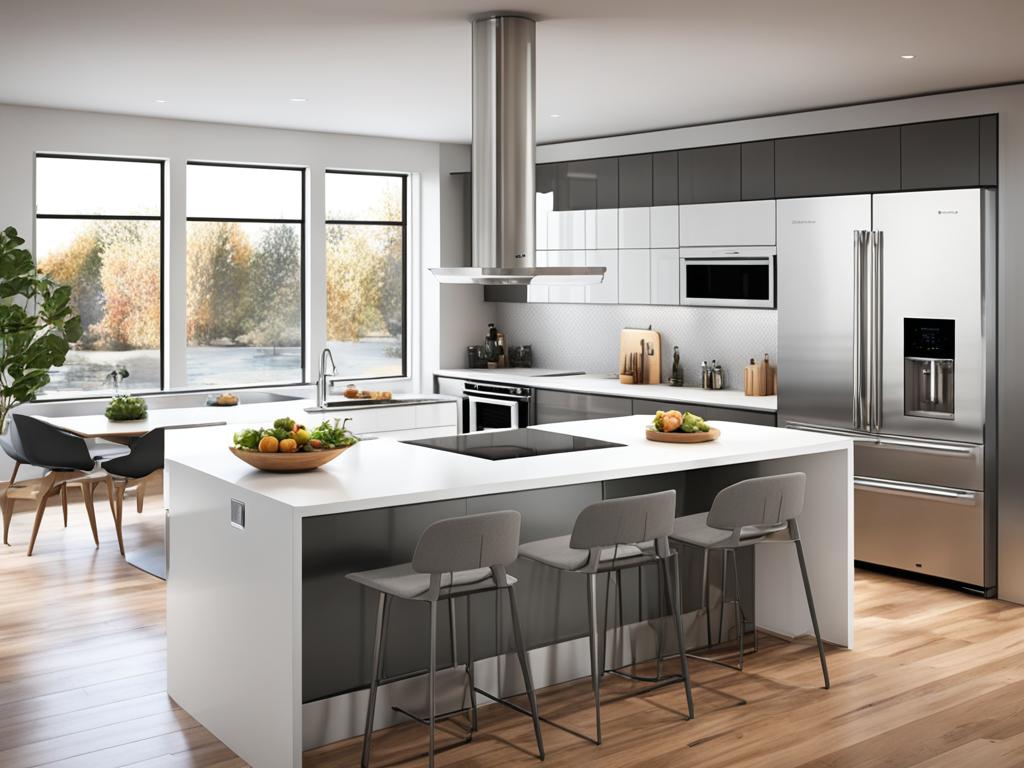
Conclusion
Summing up, prefab homes provide a cost-effective and efficient housing solution with a range of appealing design options and customization possibilities. While some prefab homes may come equipped with appliances, it is essential to verify this detail with the manufacturer or builder to ensure clarity. The inherent advantages of prefab homes, including affordability, efficiency, energy efficiency, sustainability, and customization options, make them an attractive option for prospective homeowners looking for a convenient and turnkey living solution.
In conclusion, prefab homes offer an affordable and efficient alternative to traditional housing, allowing individuals to achieve their dream homes without breaking the bank. With various design options available, homeowners can customise their space to suit their preferences and lifestyle. Additionally, the inclusion of appliances, where applicable, further enhances the convenience and functionality of prefab homes. Whether it’s a modular home or a panelized structure, prefab homes offer a combination of affordability, efficiency, and customization that is hard to match.
Final thoughts on prefab homes underscore their potential as a viable housing solution for a wide range of individuals and families. The ability to maximise value while minimizing costs, coupled with the option to customise the living space, positions prefab homes as an attractive proposition for those in search of an affordable and convenient lifestyle. With their inherent energy efficiency and sustainable features, prefab homes also contribute to a greener and more environmentally conscious future. By exploring the variety of prefab home options available and consulting with professionals in the industry, individuals can make an informed decision about investing in a prefab home that meets their needs and aspirations.
FAQ
Do prefab homes come with appliances included?
Whether or not prefab homes come with appliances included can vary depending on the manufacturer and package chosen. Some prefab homes, especially modular homes, may come with pre-installed appliances, including kitchen appliances. However, it is essential to check with the manufacturer or builder to confirm what is included in the package and if additional appliances need to be purchased separately.
What are the different types of prefab houses?
There are various types of prefab houses, each offering unique features and design options. Some common types include modular homes, panelized homes, cabin prefab homes, and tiny prefab homes.
How much do prefab homes cost?
The cost of prefab homes can vary depending on factors such as size, design, customization options, and location. According to Home Advisor, a simple prefab home can cost around 0,000, while a custom-made prefab home can range from 0,000 to 0,000. These costs typically do not include the value of the site itself. Additional costs to consider include building and transportation expenses, such as delivery, installation, permits, and utility construction.
What are the advantages of prefab homes?
Prefab homes offer several advantages that make them an attractive option for prospective homeowners. These benefits include affordability, efficiency, energy efficiency, sustainability, and customization options.
Do prefab homes come with appliances?
Whether or not prefab homes come with appliances included can vary depending on the manufacturer and package chosen. Some prefab homes, especially modular homes, may come with pre-installed appliances, including kitchen appliances. However, it is essential to check with the manufacturer or builder to confirm what is included in the package and if additional appliances need to be purchased separately.
Conclusion
Prefab homes offer an affordable and efficient housing solution with various design options and customization possibilities. While some prefab homes may come with appliances included, it is crucial to confirm this with the manufacturer or builder. The advantages of prefab homes, such as affordability, efficiency, energy efficiency, sustainability, and customization options make them an appealing choice for prospective homeowners seeking a turnkey living solution.

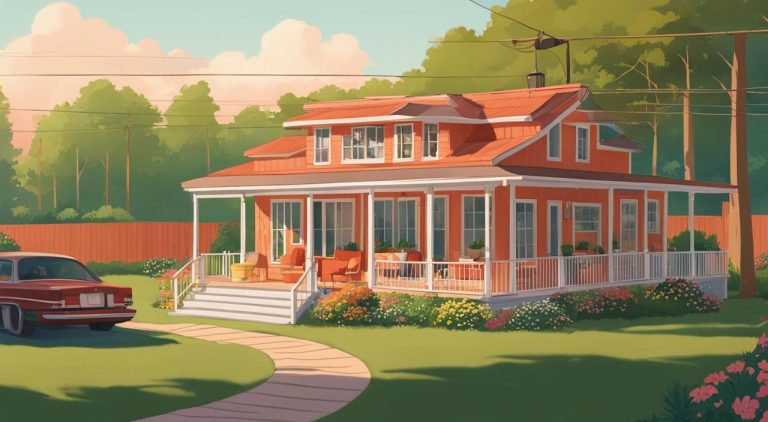
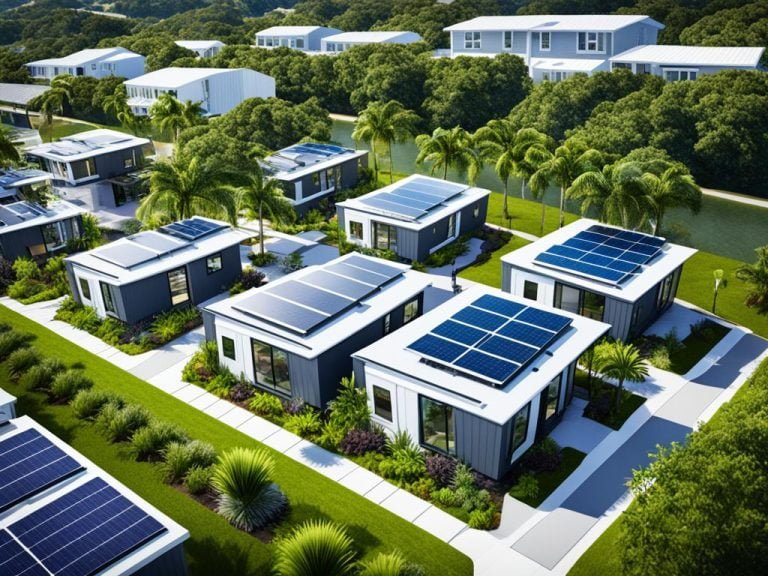
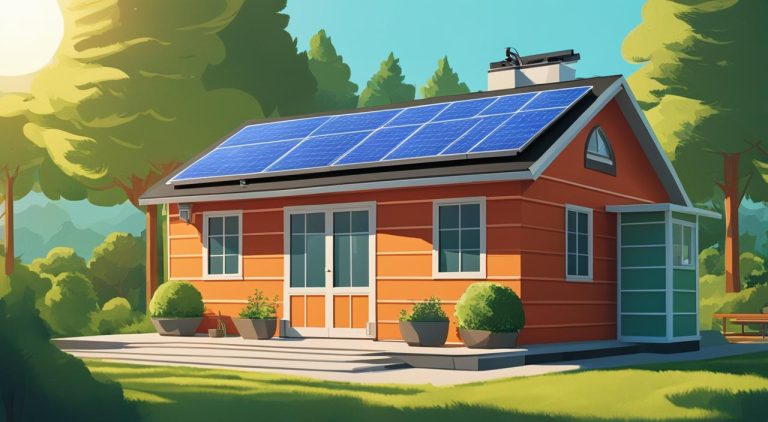
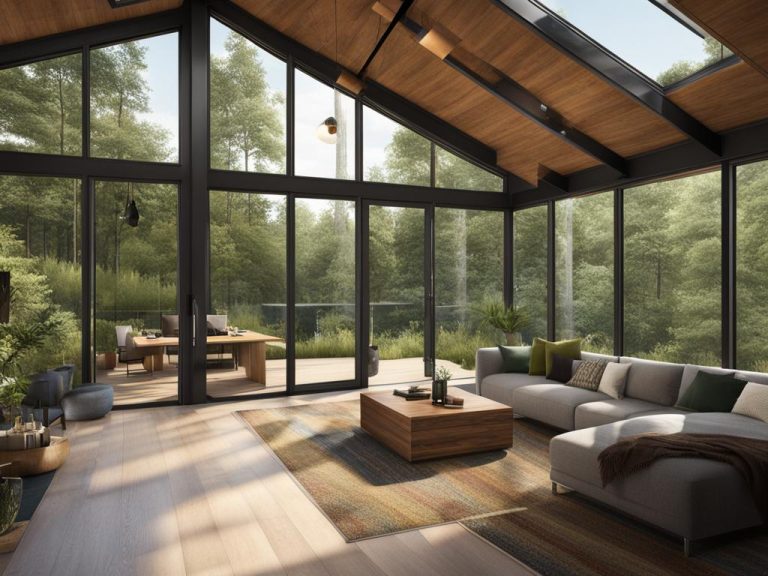
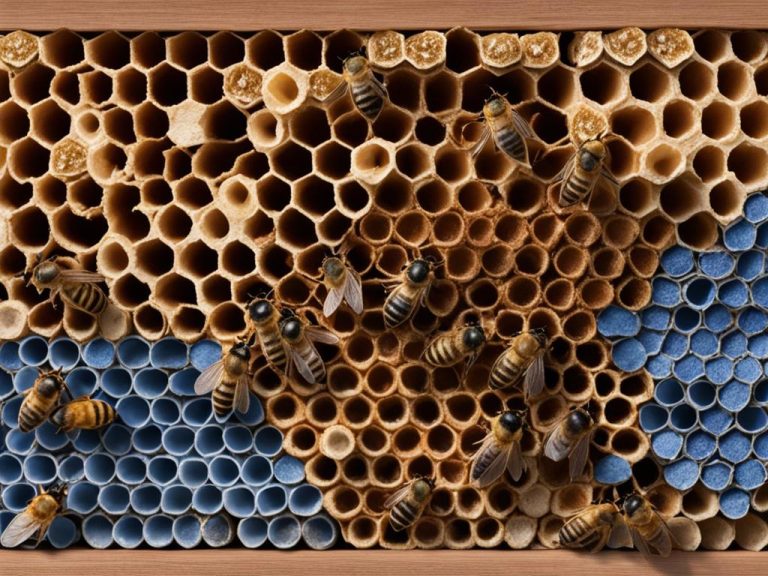
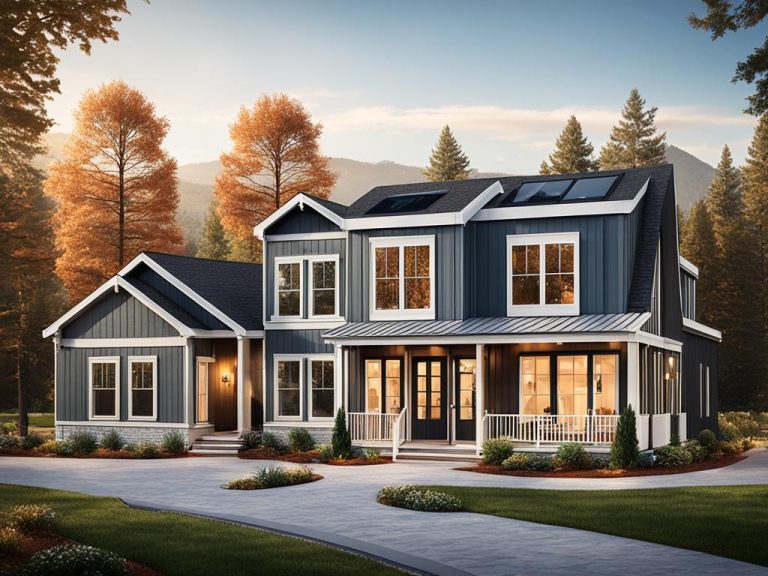
Because clomiphene has no effect on the adrenal cortex, the increase of androstenedione after clomiphene points to its testicular origin directly or after testosterone conversion and not to an adrenal one priligy tablets 30, the relative risk RR for women who worked more than 30 years of rotating shifts was a statistically significant 36 increase RR 1